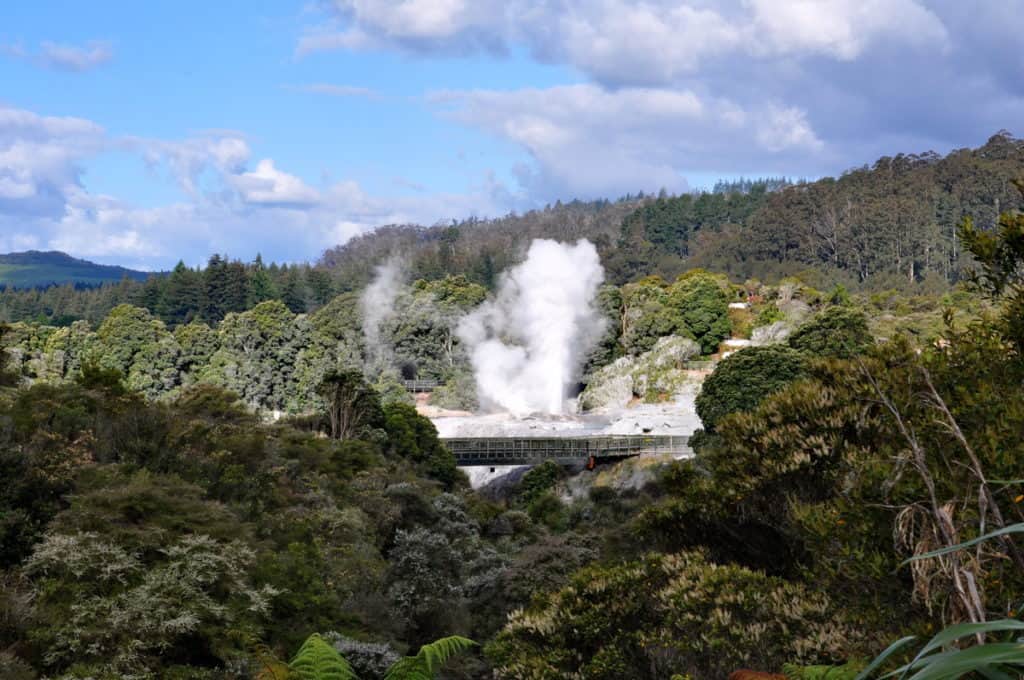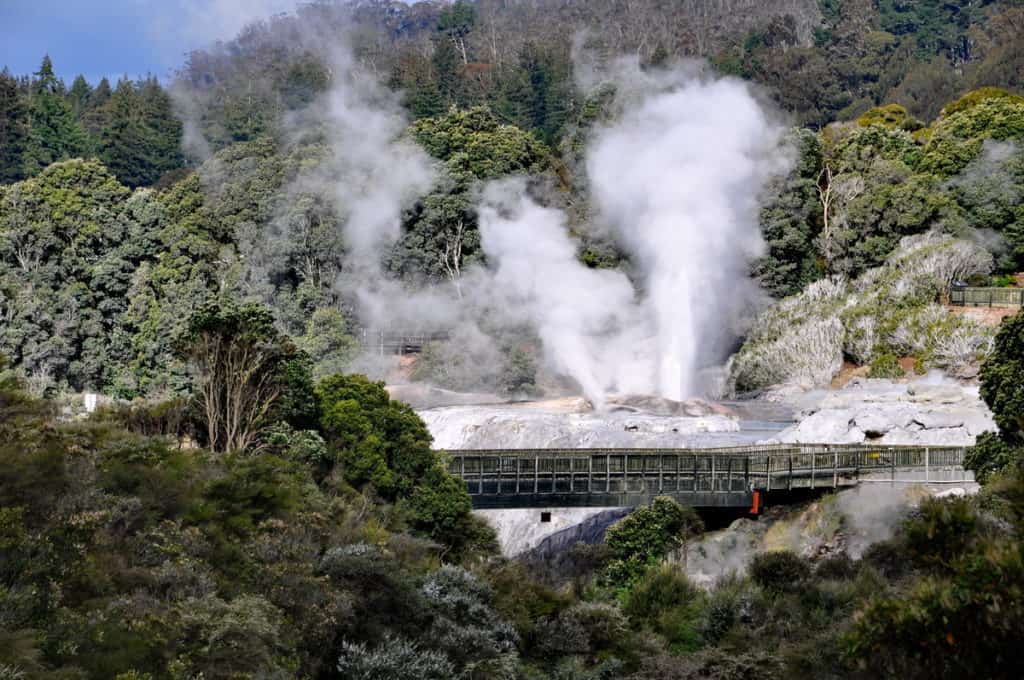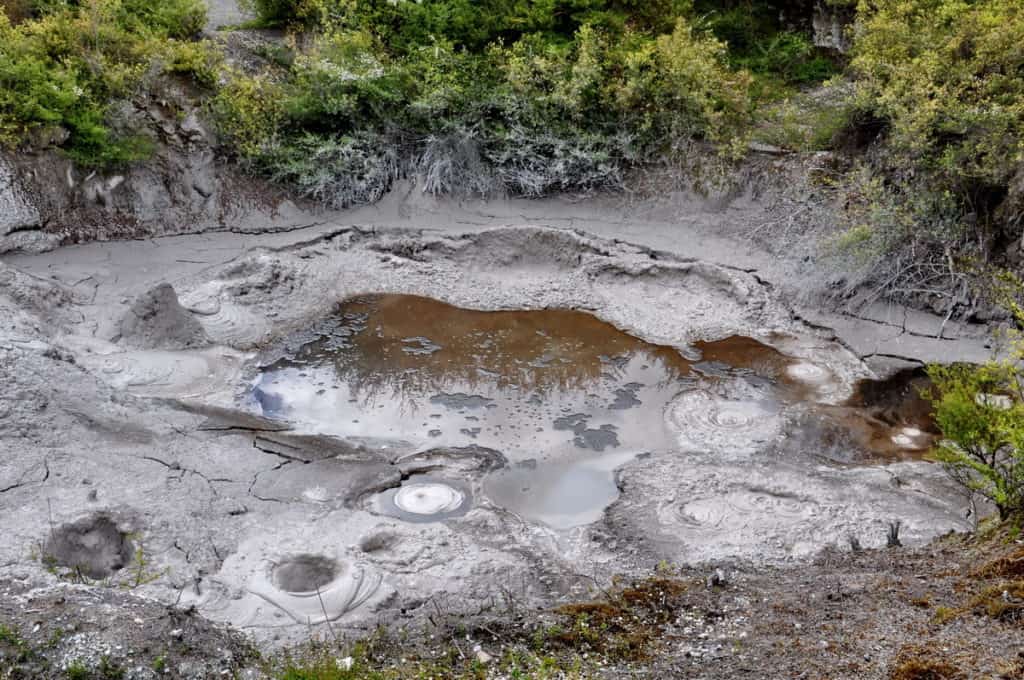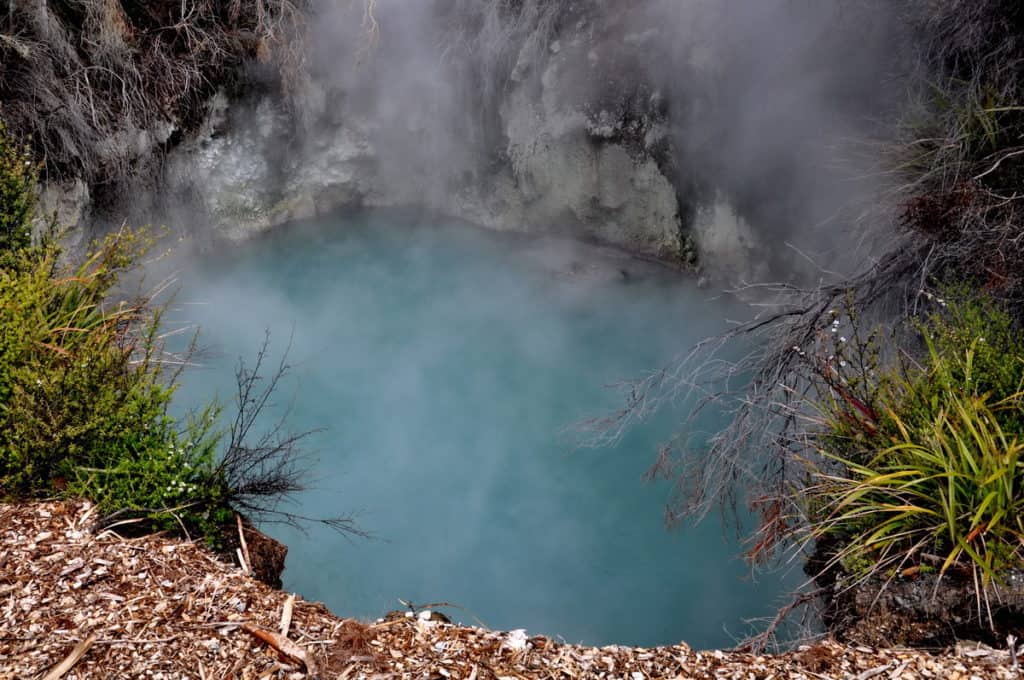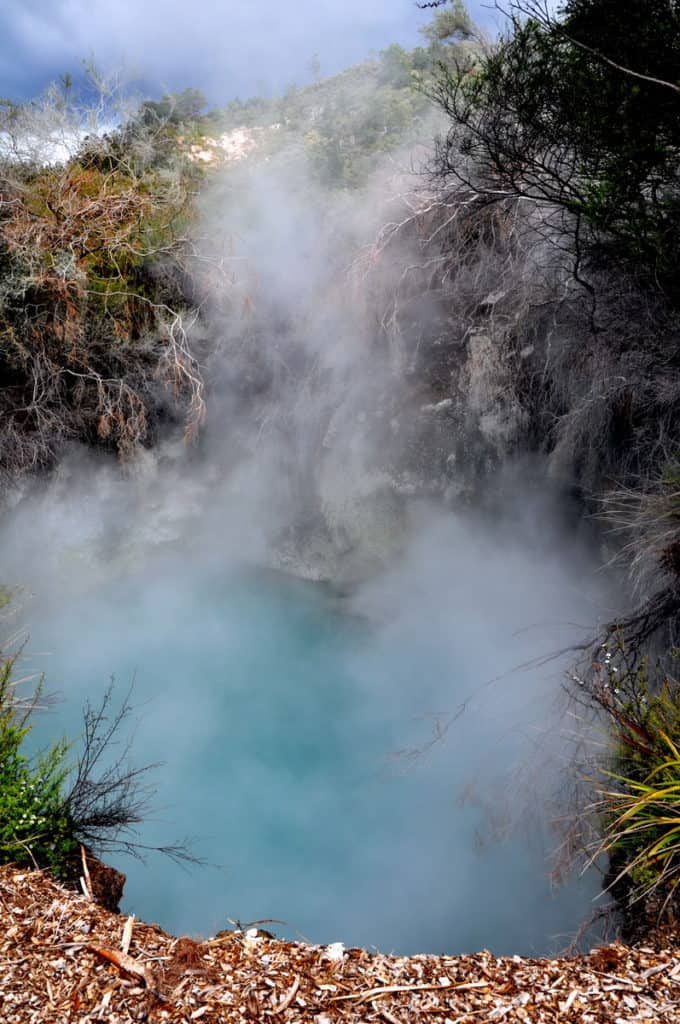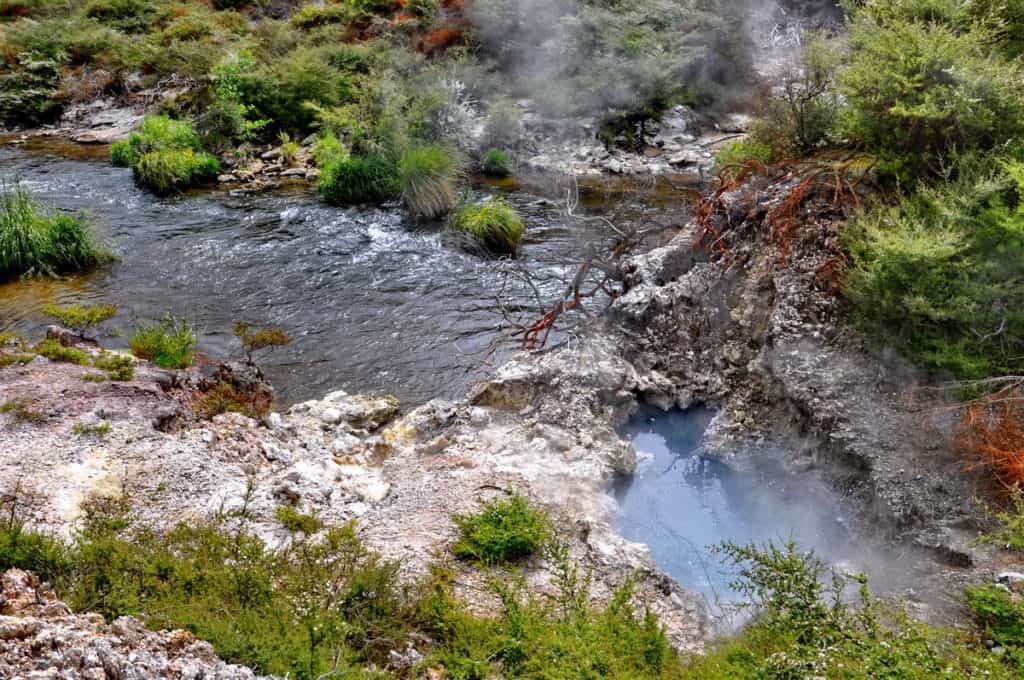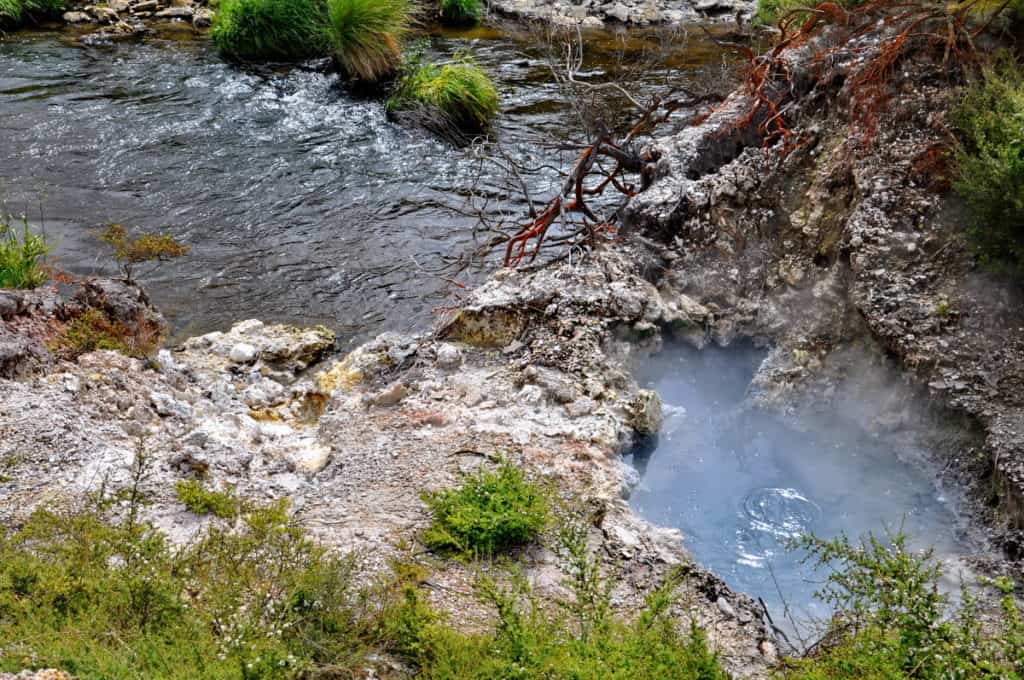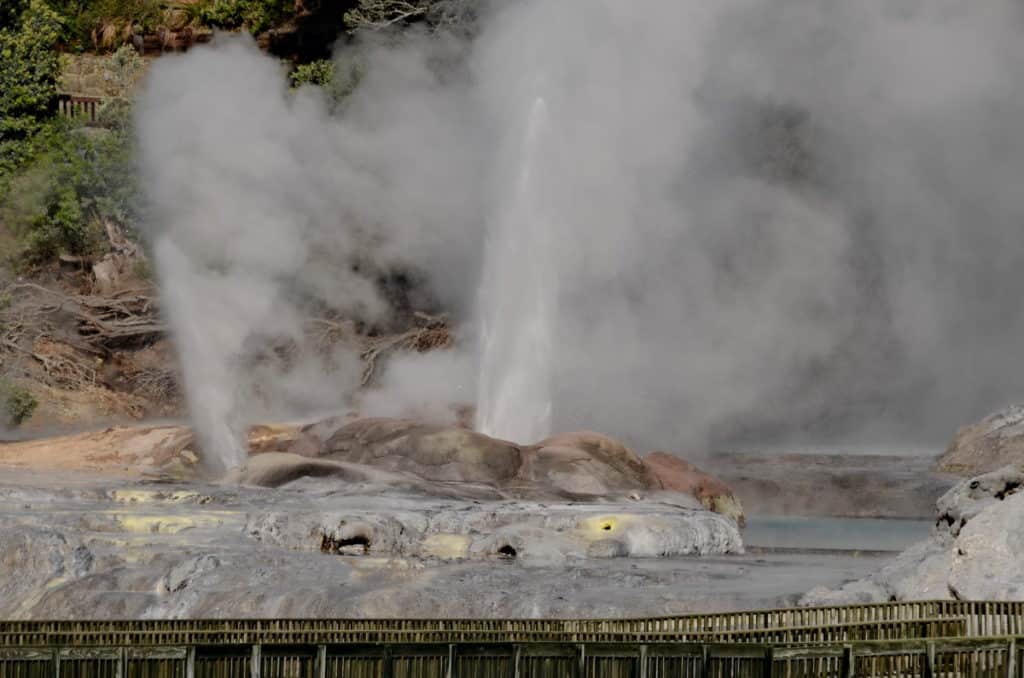Geothermal Wonders at Te Puia Geothermal Preserve near Rotorua, New Zealand

Te Puia Geothermal Preserve near Rotorua, New Zealand, is located within Whakarewarewa Thermal Valley. Bob and I decided to investigate the natural wonders caused by the continual geothermal activity in that Taupo Volcanic Zone of the North Island, this after spending the early part of the same day at another attraction, Hobbiton.
Early that morning, from the doorstep of our accommodation at Panorama Country Homestay, it was possible to see clouds of steam rising from various vents on the far side of Lake Rotorua, evidence of the ongoing volcanic activity in that part of the country.
Previously known as Te Whakarewarewatanga O Te Ope Taua A Wahiao, meaning “the gathering place for the war parties of Wahiao”, Te Puia preserve is named for the Maori fortress that was first occupied there in 1325.
Just inside the admissions gate into Te Puia, Bob and I found ourselves at an observation point overlooking Geyser Flat. Almost all of the active geysers in Whakarewarewa Thermal Valley are aligned along a common fissure on Geyser Flat. We also got a glimpse through the lush tropical foliage of Puarenga Stream that runs through the Preserve. It lies about 6 metres below the Flat.
Whakarewarewa Thermal Valley is home to the largest geyser in New Zealand. It is called Pohutu Geyser, and it routinely erupts about 20 times per day. Our timing was impeccable as it was erupting as we looked out over the Preserve. Though a distant view, this mighty geyser still impressed us and diminished the lesser Prince of Wales Feathers Geyser at its side.
Because the geysers are on a common fissure, each has an effect on the other. Prince of Wales Feathers Geyser, also known as Te Tohu, is called an indicator geyser because, when it starts to play, it is known that Pohutu Geyser will soon follow suit. Prince of Wales Feathers Geyser starts out with a feeble spray but ends up with a 9-metre high column of water shot out an an angle. Next to it, Pohutu Geyser demonstrates quite a display of thermal power when it forcefully shoots hot water skywards to a distance of 30 metres (100 feet). Pohutu’s eruptions can last anywhere from a few minutes to days at a time.
Geothermal fluids underlie the whole of Whakarewarewa Thermal Valley and the city of Rotorua. Even in neighborhood parks, we saw random vents spouting steam, and there is at least one occasion when people awoke to a new day and found that a hot pool had opened and partially swallowed their house during the night. That is why designated paths and bridges must be adhered to when hiking through Te Puia.
In this area, it is magma at great depths that heats up cool groundwater. The hot water then rises to the surface leading to features such as geysers, mud pools, fumaroles and hot pools. Because this is also an area of active volcanoes, precautions have been taken to warn visitors of impending danger. Let’s just say that we obeyed the rules and did not wander.
As impressed as we were with Pohutu Geyser, there was much more to see so Bob and I moved on to discover other fascinating features found at Te Puia. The sight of a Mudpot or Mud Pool was quite unnerving. My first thought was that something could be swallowed up never to be seen again.
Mud Pools are formed when thermal steam and acid gases rise to the surface under ponds of rainwater. Black sulphur colours the mud pools in varying shades of grey and sometimes will create a black oily slick on the surface.
The acid gases and steam decompose the surrounding earth to form white kaolin clay and silica, which in turn mix with rainwater to form the mud. The pool of bubbling mud is highly acidic, and the steaming bursts can reach temperatures of 95-degrees Celsius (200° F). As we looked on, vapors rising from the muddy cauldron occasionally obscured the boiling ooze.
In dry conditions, the mud is thick and sticky, whereas wet conditions result in mud that is much more fluid. As we navigated between the mud pools, the mud sputtered and burped leaving in its wake symmetrical ripples.
Ngamokaiakoko Mud Pool is the largest and deepest at Te Puia. The name means “playthings of Koko” because the bursting bubbles suggested the playful nature of children to the Chief who coined the name.
This mud pool is a viscous, bubbling slurry that runs deep…6 to 10 metres deep, in fact. It was intimidating to think that one misstep could put us in danger.
As the sun beat down on Bob and me, we tread slowly on the dirt paths and wooden boardwalks that guided us safely from one featured point of interest to the next. It was quite intriguing to be surrounded on all sides by various types of steaming cracks and craters such as this fumarole with pink-coloured edges. A fumarole is any opening or crack in the earth’s crust through which hot, sulphurous gases escape.
In areas near volcanoes, hot magma and heated rocks emit gases that interact with groundwater, and as the gases hit the cooler surface air, they condense into steam.
Our surroundings were eerily other-worldly. The surface of the ground has been reshaped by growing mounds of sulphurous material and painted various colours through reactions with strong acids like hydrogen chloride and sulfur dioxide, to name a couple.
We learned that the Maori people have lived in Whakarewarewa Thermal Valley since the early 14th century in order to take advantage of the geothermal activity for heating and cooking.
Some hot springs were suitable for cooking food that was lowered inside woven flax baskets into the boiling water. Steaming food was accomplished by burying food inside woven pouches and allowing steam from vents to cook it, or baking was accomplished by using hot volcanic rocks buried in the ground to make a pit oven.
Our wanderings through Te Puia Geothermal Preserve never took us far away from Puarenga Stream. This waterway is supplied by 3 nearby streams, and the freshwater has been a source of fish and waterfowl for the Maori people for ages.
Even as it passes over cracks in the black sinter rock, steam forces bubbles to appear on the surface.
Next to the Maori Cultural Centre, we found this beautiful cobalt blue lake called Bluey Volcanic Pool. The water in Bluey Volcanic Pool is an accumulation of runoff from surrounding geysers, so its temperature is a fairly constant 30-35-degrees Celsius (85-95-degrees F.). Traditionally, this pool was used for bathing. The dissolved minerals in the alkaline water give it the striking blue colour.
There are a total of seven geysers at Te Puia, three that erupt regularly, two that spout water occasionally, and two that were temporarily dormant. With the regular discharge of water from the active geysers, there is a constant source of geothermic water spreading across the distinctly colourful sinter terraces and finding its way into Puarenga Stream.
Upon completing our tour of Te Puia Geothermal Preserve, we passed by Pohutu Geyser once again. As if in farewell, it put on another splendid display as it does pretty much every hour on the hour. It was now time for us to fully explore the cultural aspects of the Maori people at the Te Puia Cultural Centre. Little did we know that would be become part of the show!
Frame To Frame – Bob and Jean

